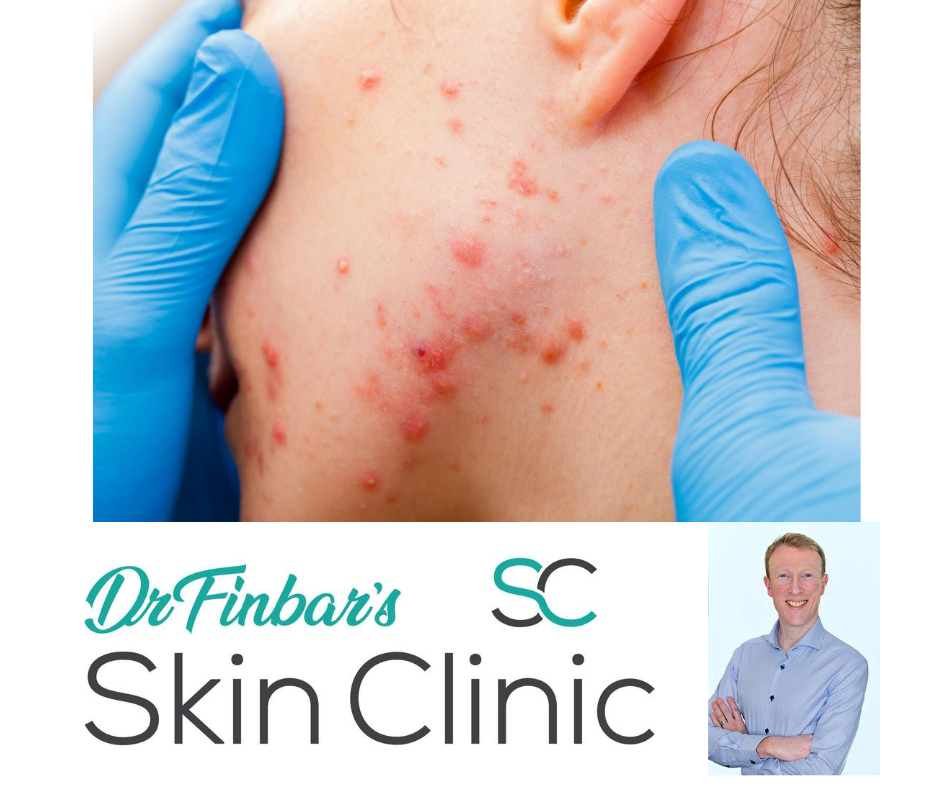The ABCDE Rule for Spotting Skin Cancer Early
When it comes to skin cancer, early detection saves lives. But what should you actually look for? One of the easiest and most reliable tools we teach patients is the ABCDE rule—a simple way to assess whether a mole or skin lesion might be suspicious.
I'm Dr. Finbar, a GP with a special interest in dermatology, and in this blog, I’ll guide you through what each letter means, how to use this rule at home, and introduce a helpful second tool—the EFG rule—which I often use to catch the sneaky nodular melanomas that don’t follow the classic pattern.
What Is the ABCDE Rule?
The ABCDE rule is a visual guide developed to help identify features of melanoma, the most serious form of skin cancer. It’s not perfect—some melanomas don’t follow these rules—but it’s an excellent place to start when checking your skin.
Let’s break it down:
🅰 Asymmetry
One half of the mole doesn't match the other. If you drew a line through the middle, the two sides wouldn’t mirror each other.
🅱 Border
Look for edges that are irregular, notched, or blurred—rather than smooth and even.
🅲 Colour
Benign moles are usually one shade of brown. Suspicious moles may have multiple colours, including black, red, grey, or even white.
🅳 Diameter – or Different
Traditionally, D stands for Diameter, especially lesions greater than 6mm (about the size of a pencil eraser).
But in my clinic, I often emphasise “D for Different”—because melanomas often just look different to your other moles.
💡 My advice? If something doesn’t look or feel quite like the rest, or it's changing noticeably, it’s worth a closer look—even if it’s small.
🅴 Evolving
This means any change over time—in size, shape, colour, elevation, or symptoms like itching or bleeding.
Change is the biggest red flag for melanoma. A stable mole is usually a harmless mole.
The EFG Rule: Spotting Nodular Melanomas
Not all melanomas follow the ABCDE rule. In particular, nodular melanomas—a more aggressive type—may look quite different. They tend to be:
-
Elevated
-
Firm to the touch
-
Growing quickly over weeks or months
That’s where the EFG rule comes in handy.
E – Elevated
It stands out from the skin and feels raised.
F – Firm
It feels solid when you press it—not soft or squishy.
G – Growing
It gets bigger or changes fast, often in a matter of weeks.
Nodular melanomas are often single-coloured (pink, red, brown, or black) and can be mistaken for a pimple or harmless bump. If you notice something growing and not going away, don’t ignore it.
Why This Matters
-
Melanoma can be deadly, but it's also highly treatable if caught early.
-
Around 2 in 3 melanomas are spotted first by patients or their families.
-
Using the ABCDE and EFG rules together gives you the best chance of catching a worrying lesion early.
What You Can Do
✅ Check your skin regularly—once a month is ideal.
✅ Use a mirror or ask someone to help check hard-to-see areas like your back, scalp, or behind your ears.
✅ Photograph your moles if you want to track changes over time.
✅ Know your skin—if something feels new or odd, get it checked.
✅ Book a full skin check if you have many moles, a personal or family history of skin cancer, or significant sun exposure.
In Summary
The ABCDE rule and EFG guide are practical tools to help you spot suspicious skin changes early. You don’t need to be an expert—you just need to be aware.
If something is changing, growing, or just looks different, don’t ignore it. The sooner a concerning lesion is diagnosed, the better the outcome.
Share this post on:
Copyright © 2023 Dr Finbars' Skin Clinic All rights reserved.







